BattleCards: Scratch and Slay
Fantasy-themed games are always a blast, and today Rediscovered Realms is dusting off a relic from the early days of trading card games: BattleCards. Published in 1993 by Merlin Publishing and designed by Steve Jackson, BattleCards offered a unique, albeit short-lived, experience that stood out from its contemporaries.
While it may be largely forgotten today, BattleCards deserves a spot in the history of fantasy-themed gaming for its innovative mechanics and quirky-fun features.
This post may contain affiliate links, which means we may receive a commission, at no cost to you, if you make a purchase through a link.
This Week’s Rediscovered Realms Theme Song:
A weary adventurer, battered by fate and shadow, stumbles through trials only to rise anew—his song a beacon for the lost and scorned. But can redemption truly outshine the echoes of the past?
| Genre: Modern Bardic | Lyrics1 |
“Ballad of the Redeemable Fool”
Dive into Vangoria: A Look Back at BattleCards
BattleCards was a fantasy card game introduced in 1993 in the world of “Vangoria” featuring a "Scratch and Slay" mechanic created by Steve Jackson. Players scratched off dots on warrior cards to reveal wounds and potentially eliminate their opponent. The game had both UK and US versions with some rules and card differences. Though sometimes considered a collectible card game, it is generally not considered to fit that categorization.
Released around the same time as Magic: The Gathering, they had very different gameplay mechanics and collectability.
Scratch and Slay: Gameplay
Scratch-off system: BattleCards used a unique "Scratch and Slay" system where players scratched off spots on their opponent’s warrior cards to reveal hits or misses. Revealing a red blood drop did damage and allowed the player to scratch again, while a blank spot switched play to the opponent. After two wounds, a player could scratch off a "life" spot, where revealing a random skull symbol meant your opponent was defeated and you get all the gold (scratching off the “purse” spot) & glory (including their vanquished card!)
Non-fighting cards: Besides the scratch-off battles, you could add fun complexity with non-fighting cards that can cast spells, trigger side games or have other effects.
Advanced combat: The advanced combat included selecting attack targets and defense areas.
Memorization: Since many of the cards had the same scratch-off patterns, wouldn’t this make the game unfair? Well, even though memorization of card patterns could give a player an advantage, it could also be viewed as the more experienced warrior/spellcaster would demonstrate that experience by being better at their roles!
UK vs US: In the UK version, a spell symbol on a defender's card allowed them to cast a spell back at the attacker. In the US version, the attacker could cast a spell after revealing a wound symbol on the defender's card. The UK version also utilized shield scratch off spots that could block attacks!
Beyond the Basics: Layers of Gameplay
But BattleCards offers more than just scratching. Packs included a variety of cards such as spells, quests, and advanced combat options. Advanced combat involved selecting attack and defense targets. Spell cards could be used during battle, with slightly different rules in the UK and US versions.
Quest Cards added another layer of depth. These cards contain puzzles, riddles, and challenges that encouraged players to explore the game's lore. By solving these quests and sending in the required cards, players could earn valuable treasure cards, and ultimately, the Emperor of Vangoria card.
Collectibility:
Treasure cards: The ultimate goal in BattleCards was to get the Emperor of Vangoria card by collecting eight Treasure Cards through quests or by redeeming gold earned from battles at the Trading Post. There were limited amounts of gold and silver foil treasure cards you could trade-up with Self Addressed Stamped Envelopes (SASE). If you were early enough, you got the gold - once that ran out, you got the silver.
Emperor of Vangoria: This card was available by translating secret messages on the back of all 8 Treasure Cards (written in Vangorian script), then sending them in to the decrypted address. Those cards were then voided and returned with the card #140 in the US. Here’s what’s really wild: you could get a Gold Variant of the Emperor US card by returning Silver and Gold treasure cards - which you could only get by cashing in regular sets of treasure cards! (No gold or silver foiled cards were available in the packs - they had to be redeemed through the mail.)
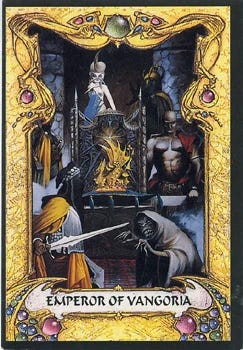
Trading Post: Players could exchange "gold" earned from defeated cards at the "Trading Post" card for special Silver Foiled Treasure Cards.
Quest cards: Solving puzzles on Quest cards and sending in the required cards could earn players better cards.
Damaged cards: The Scratch and Slay system damaged the cards, reducing their collectible value since they were effectively single-use.
Limited time offer: The offer to redeem cards for treasures expired in 1994, making many cards useless for their intended purpose.
Rarity: Although rarity was not a key aspect, some cards were harder to find than others.
Compared to Magic: The Gathering:
BattleCards lacked the deck-building and strategic card combinations of Magic: The Gathering.
BattleCards required destroying the card to play, differentiating it from other collectible card games.
BattleCards was even considered "too complicated for the time" by Steve Jackson.
Artists of Vangoria
BattleCards also showcased impressive fantasy artwork - many artists already known by their work on the Fighting Fantasy gamebook series and for other Games Workshop productions.
There’s a whole subset of BattleCards that features each artist.
Here are some key differences between the UK and US editions.
UK Edition Artists:
First off, the UK cards are way bigger than the US versions! Because of the extra real estate, they sometimes show more of the original artwork.
The UK set had silver scratch off dots instead of the US gold.
They also had shield cards that weren’t available for the US edition!
Some of the cards had different names, and they mostly had different numbers for cards that were similar.
The UK edition showcased artwork from well-known fantasy artists, including Iain McCaig, Les Edwards, and Peter Andrew Jones.
Alan Craddock was also among the artists for the UK edition.
US Edition Artists and the Replacement of Alan Craddock:
The US edition replaced Alan Craddock's artwork with that of Martin McKenna.
Two cards illustrated by Alan Craddock in the UK edition, "Quest Clues" and "Battle Secrets", were dropped entirely from the US edition. The information from these cards was spread across five "Secrets of Vangoria" cards in the US edition.
As a result, the "Alan Craddock" artist card (card 141 in the UK set) was also absent in the US version, replaced by a "Martin McKenna" card (card 8 in the US set).
The artwork on the "Secrets of Vangoria" cards in the US edition was the same as that used on the "Shield Cards" in the UK set, which were illustrated by Terry Oakes.
Let’s take a look at the complete US set. The way the US cards were numbered, they’re mostly grouped by artist. I didn’t want to take out every single card from their sleeves, so the pictures below are not 100% artist-sorted.
Iain McCaig, whose work is always exceptional, is also known for epic Hollywood designs and for the album cover of Jethro Tull's Broadsword and the Beast.
Gino D’Achille is known for his art adorning Edgar Rice Burroughs’ John Carter books (and some Sagard the Barbarian gamebooks!)
I know that Frost Giant illustration!
Rediscovered Realms covered the little-known gamebook series, “Sagard The Barbarian” by D&D creator Gary Gygax and Flint Dille. Check it out here!
Les Edwards has won the British Fantasy Society award for Best Artist seven times, and was awarded the World Fantasy Award in 2008!
Hey - I’ve seen that Bloodsucker before!
Terry Oakes is well known for his science fiction, fantasy, and "grand guignol" gothic horror illustrations from the 1980s.
Patrick Woodroffe, also known as Waldmeister, was the creature designer on The Neverending Story II! (What is this “Neverending Story 2” thing you speak of? It does not exist in MY reality!)
Peter Andrew Jones has created decades of incredible book jacket covers, film posters, advertising, and games, as well as contributing to many BBC TV and commercial TV programs and projects.
I love that card, “Jorramungha”! Peter’s art was used as the cover for White Dwarf magazine #59 (Nov 1984) - one of my personal favorite covers.
Martin McKenna was awarded the British Fantasy Award for Best Artist in 1995. Unfortunately, he took his own life in 2020.
Reasons for Artwork Changes:
The reasons for replacing Alan Craddock's artwork with Martin McKenna's in the US edition are not explicitly stated in the sources. A mystery to be solved . . .
Trivia and Fun Facts
BattleCards debuted at Gen Con 1993, around the same time as Magic: The Gathering.
The game has a Vangorian alphabet, used to translate secret messages on the Treasure Cards.
Solving quests and redeeming cards for treasures was a limited-time offer that expired in 1994.
The "Scratch and Slay" system meant that cards were essentially single-use, diminishing their collectibility.
Some argue that BattleCards could be considered one of the first collectible card games.
Steve Jackson later said the game was "probably too complicated for the time".
Do the Battles of BattleCards Take Place in the World of Fighting Fantasy?
BattleCards has strong links to the Fighting Fantasy series, even though it is not officially part of that collection. These links include its creator, artists, and thematic similarities.
Creator: BattleCards was created by Steve Jackson, who also co-created the Fighting Fantasy series.
Artists: Many artists who worked on BattleCards also contributed to the Fighting Fantasy genre, including Iain McCaig, Les Edwards, Alan Craddock, Martin McKenna, and Terry Oakes. Iain McCaig's artwork from Ian Livingstone's Casket of Souls was reproduced on BattleCards.
Setting: There are similarities between the BattleCards setting of Vangoria and the Fighting Fantasy Old World. Both have a sea called the Eelsea. The Orb of Shantos appears in both BattleCards and The Tasks of Tantalon.
Thematic Elements: A line from The Trolltooth Wars about moonweed plants is similar to a line from The Cursewitch's Quest card, which mentions moonweed as a potion ingredient. The term "Cursewitch" is used in both The Trolltooth Wars and the Cursewitch's Quest card.
Fighting Fantasy Websites: Many Fighting Fantasy websites include BattleCards as part of the Fighting Fantasy collection.
Other Rediscovered Realms editions where Fighting Fantasy was featured:
Final Thoughts
BattleCards may not have achieved the same legendary status as Magic: The Gathering, but it remains a fascinating piece of gaming history. Its unique scratch-off mechanic, quest-driven goals, and impressive artwork make it a memorable title for collectors and fantasy enthusiasts alike. So, if you ever stumble upon a box of these relics, dive in and explore the world of Vangoria!
Your next piece of fantasy fun is calling.
Remember to check out the new Rediscovered Realms Amazon Storefront for the most epic gift-giving ideas for those important adventurers in your life (including yourself 🗡)
As an Amazon2 Associate I earn from qualifying purchases)
You are not only brave, but a Generous Adventurer whose love of Discovery, Imagination & Fun transcends our mere mortal coils . . .
. . . and for that, I thank you!
Other News from The Realms
Time for the 2nd “DriveThruRPG DRAGON’S DRAW”! for current members of “THE 300”!
And the winner of the February $10 DriveThruRPG gift card is . . . dshouston!!! Congratulations! I’ve contacted you through email with the details.
(For anyone else who wants to be a part of future “DriveThruRPG DRAGON’S DRAW” drawings - as well as for our “EPIC FANTASY LOOT” drawings, make sure to snag one of our remaining spots in “THE 300” paid subscription tier. I’ve been too busy to go back in and raise the price, but my procrastination could be your gain if you snag a spot before the price goes up!
Also - March is here and I’ll reveal the 1st “Epic Fantasy Loot” giveaway for paid subscribers in next week’s edition. I’m going through the vault to select the items now but thinking of at least including a complete set of these BattleCards as part of the mix! What do you think?
It’s with sadness I report that Ernie Gygax Jr. passed away after battling insurmountable health problems.
Ernie helped shape early D&D, was the original “Tenser” of D&D lore (Spell “Ernest” backwards), and by all accounts of those who personally knew him, was a heck of a nice guy.
https://ddoplayers.com/2025/02/28/the-rpg-world-mourns-ernie-gygax-jr/
Lo, there do I see my father.
Lo, there to I see my mother,
and my sisters,
and my brothers.
Lo, there do I see the line of my people back to the beginning.
Lo, they do call to me.
They bid me take my place among them,
in the Halls of Valhalla.
Where the Brave may live forever.
Until next week, Fellow Adventurer.
Do you love heroic fantasy gamebooks like me? Consider signing up to be informed when I launch my very 1st one!
(Featuring artwork from Clyde Caldwell & Luke Eidenschink!)
Ballad of the Redeemable Fool
[Verse] On a path of twisted fate he wandered lost and torn Seekin' light in shadows dark a heart so bruised and worn Through the mist and through the pain a fool on borrowed time Yet he kept on movin' forth though life became unkind [Verse 2] Whispers on the breeze, secrets told in sighs Eyes that watched but looked away to give no sign Tried to beat the hand of fate yet stumbled in the night He was a broken wearied soul yet now his path is right [Chorus] In kindness there he found a spark that brought him to the light Bruised and battered heart of his shone forth, so bright Redeemed through trials harsh and cold a hero's tale reborn In his song we seek the balm for others' unfair scorn [Bridge] Each wrong turn and each misstep a lesson in disguise Through the realms of sorrow deep he learned to rise and rise Where the barbed winds now call his name he answers with a song Within his voice, redemption, a retort to mute the throng [Verse 3] In the hall of timeless tales his story finds its place Once a fool now wise and bold a wanderer with grace Rusty tears once shed for guilt now gilded by insight In the chorus of hallowed stars his legacy shines bright [Chorus] In kindness there he found a spark that brought him to the light Bruised and battered heart of his shone forth, so bright Redeemed through trials harsh and cold a hero's tale reborn In his song we seek the balm for others' unfair scorn In the chorus of hallowed stars his legacy shines bright. In the chorus of hallowed stars his legacy shines bright.
Amazon and the Amazon logo are trademarks of Amazon.com, Inc. or its affiliates.




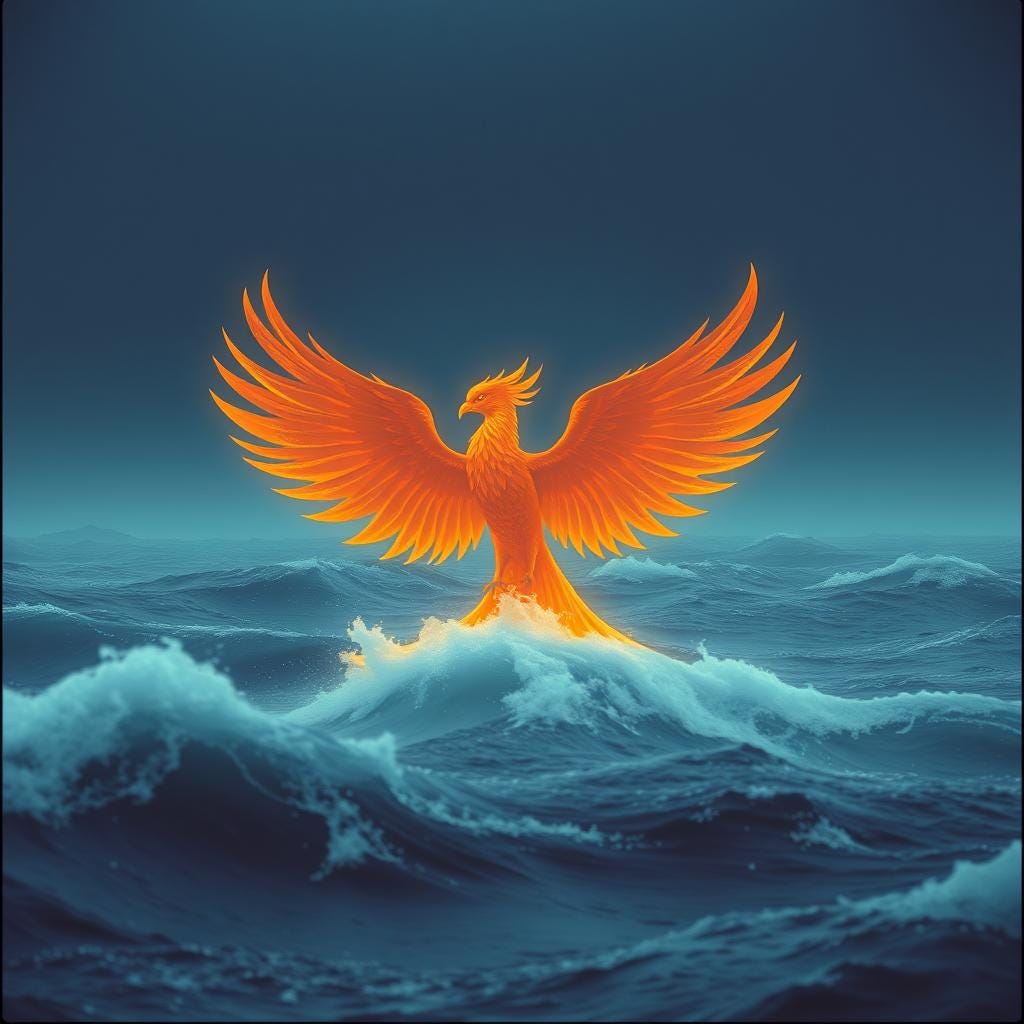
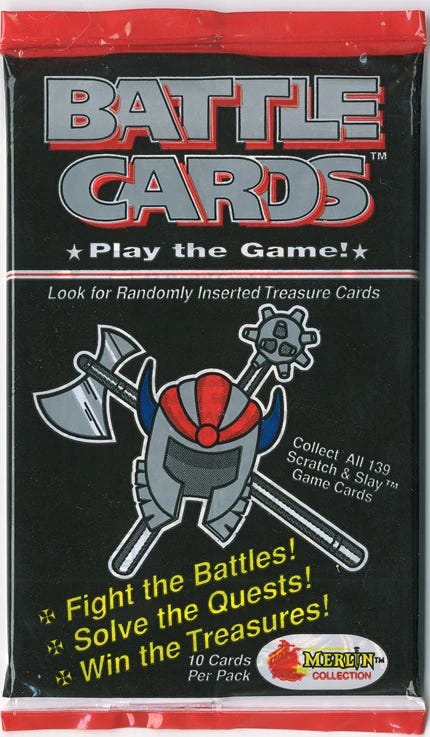





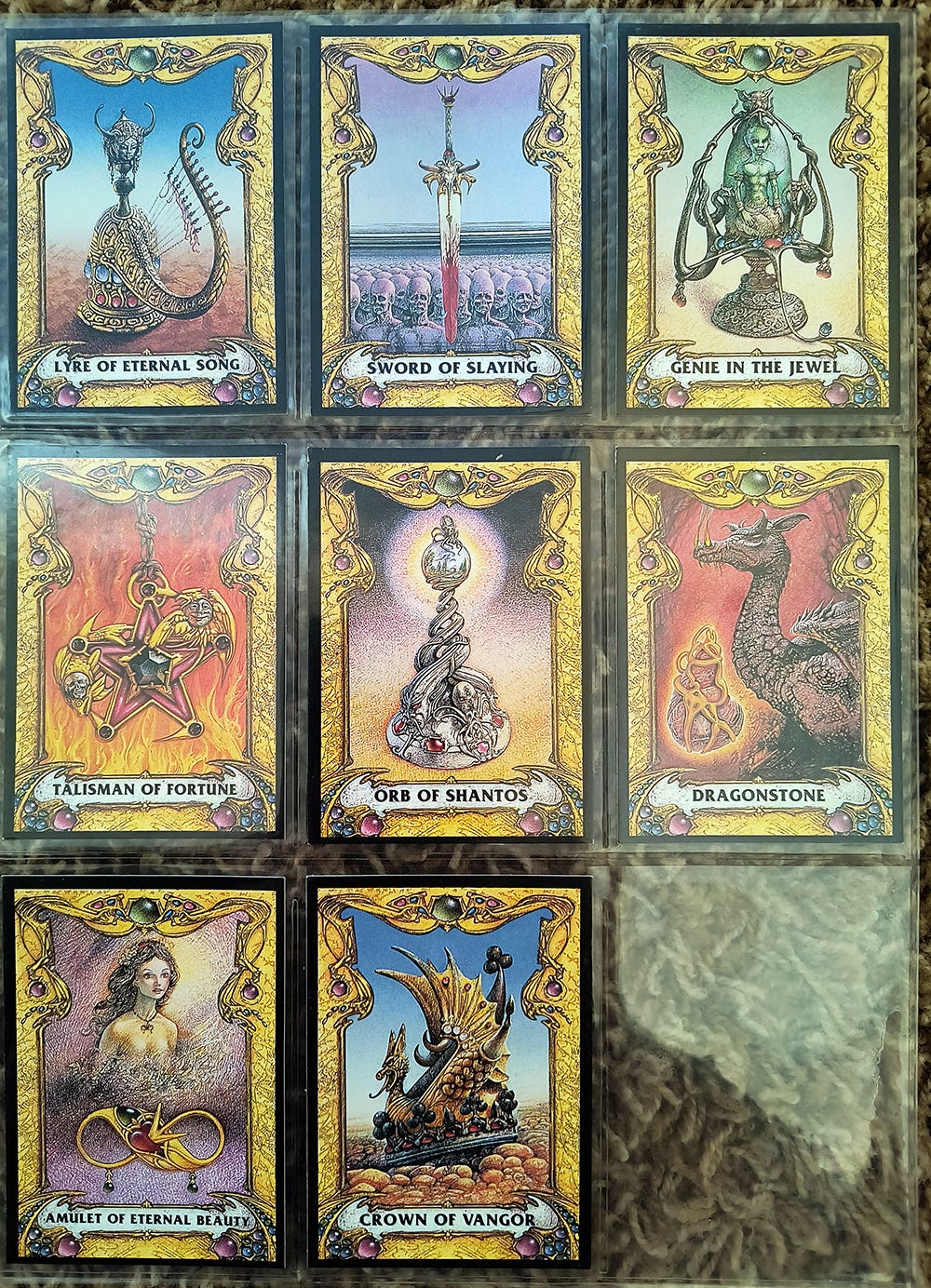
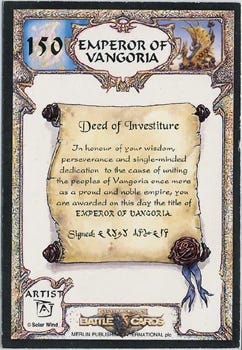




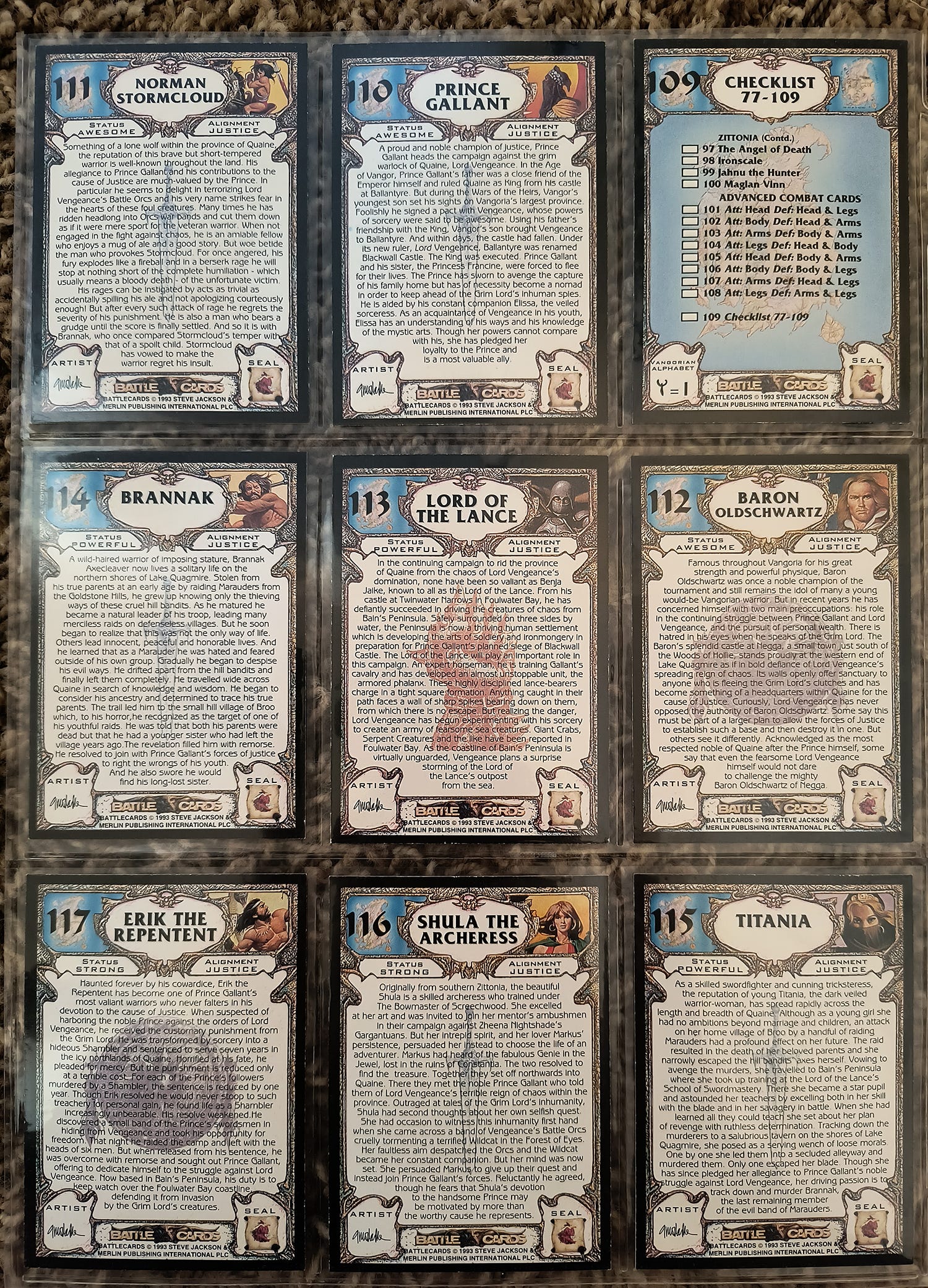
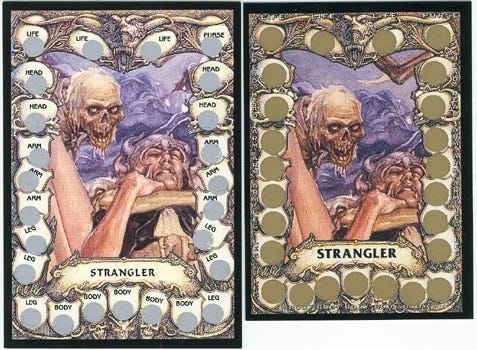



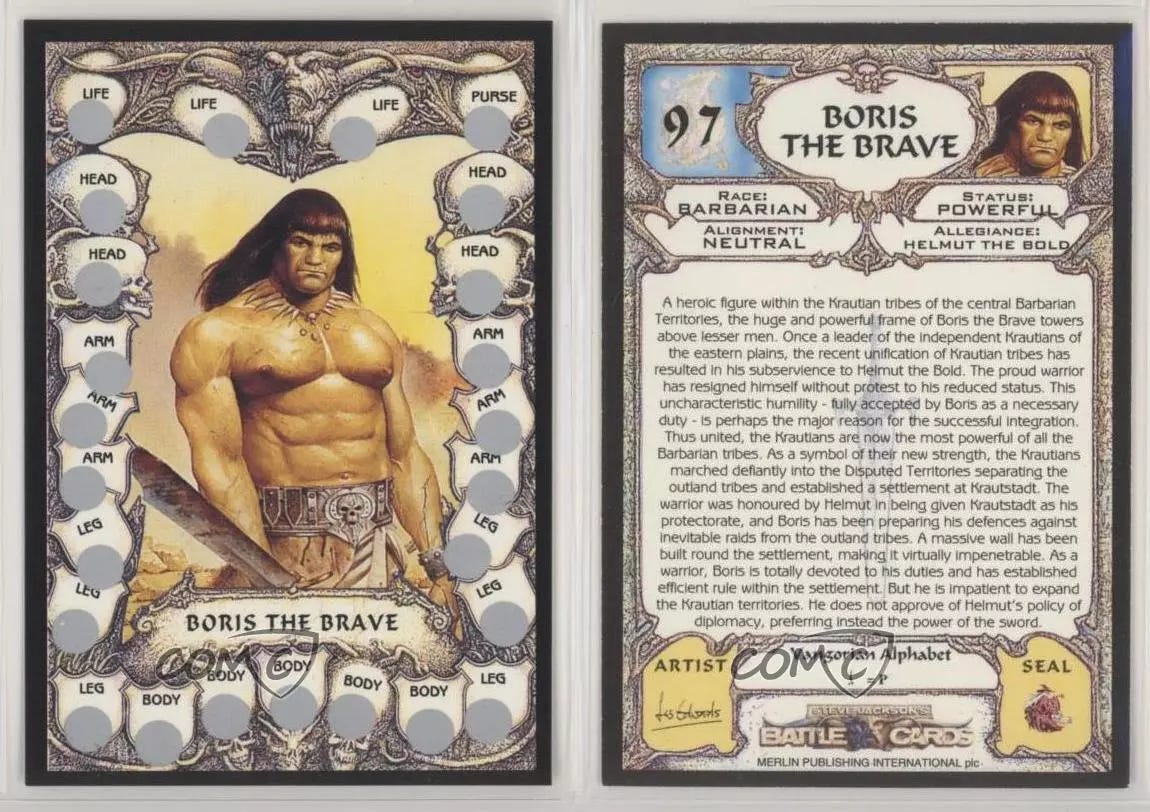
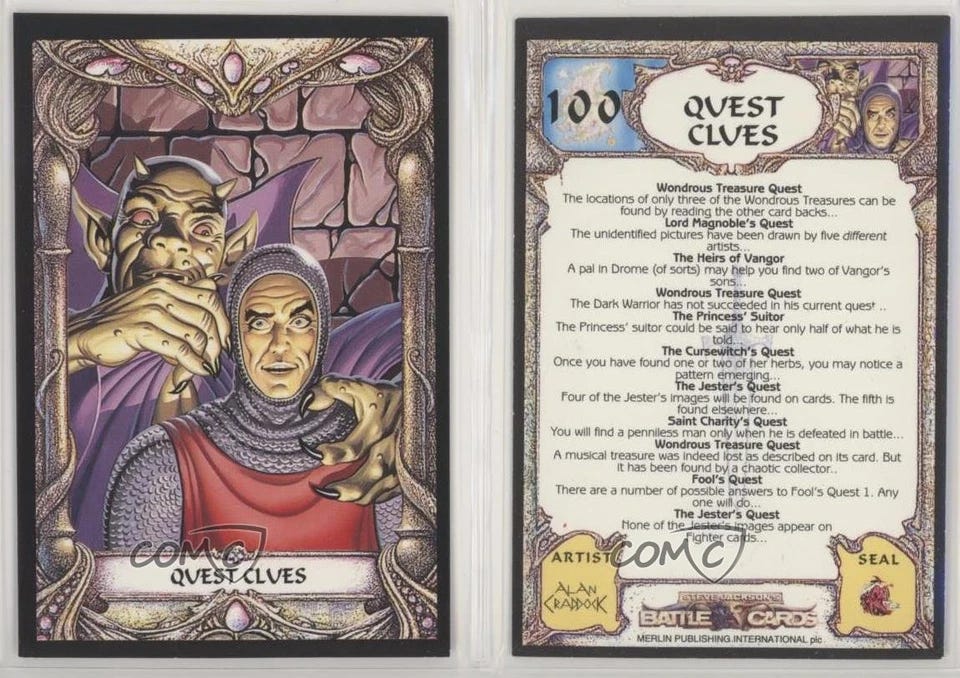



















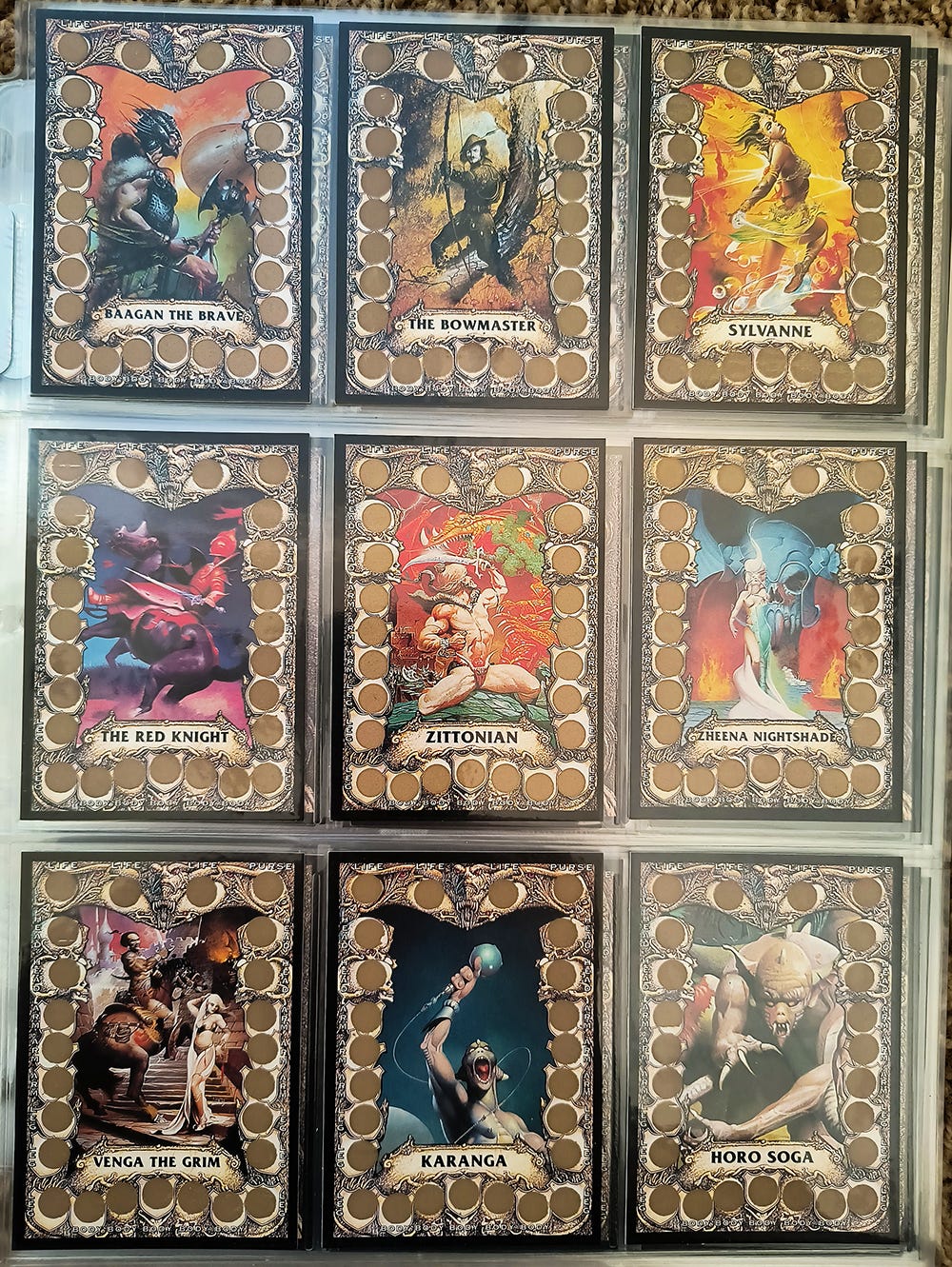

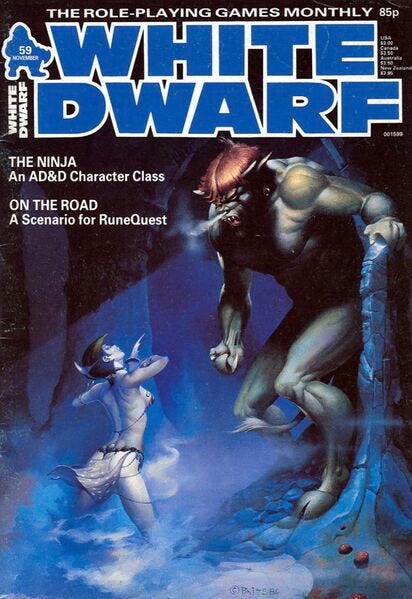





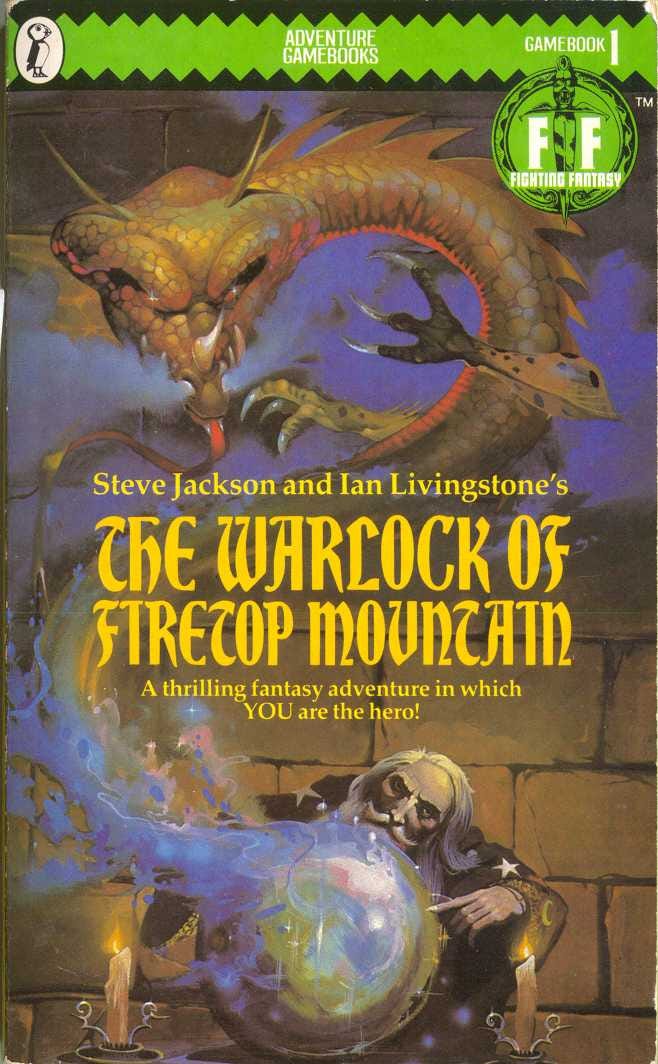
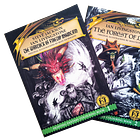





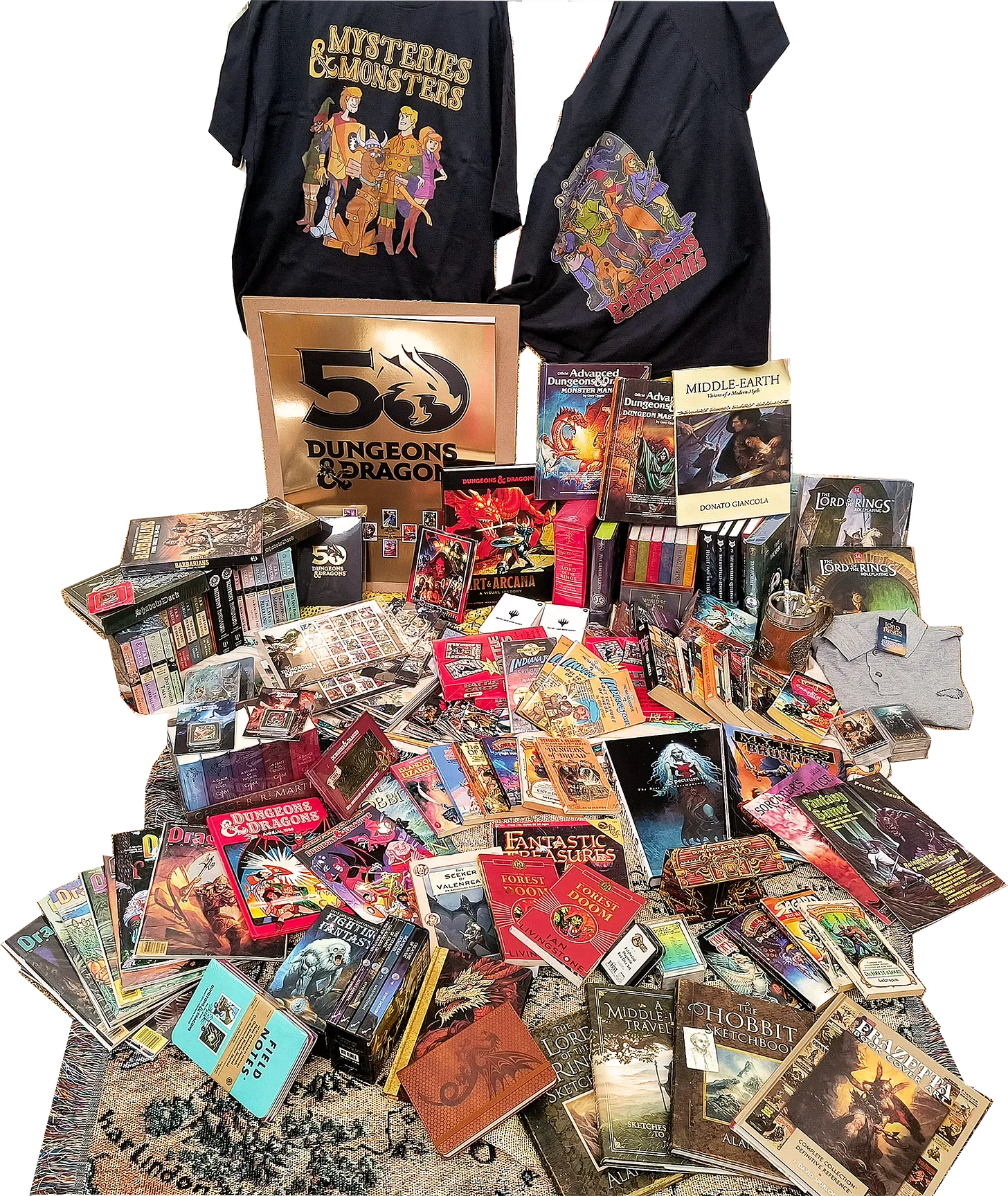


Great memory unlocked here! I never bought BattleCards in the 1990s but the previous decade before, 12-year-old me bought some Nintendo GameCardz in 1989. It was the same concept but instead of fighting other players you had to pick your pathway as Mario or Link from Legend of Zelda and scratch off to see what happened to you in that “level” of the game. For a 12 year old who’s parents thought an actual Nintendo was too expensive these GameCardz were a blast on a Saturday afternoon.
Holy cow! I think I bought (or was bought) all of one pack of these cards. I must have been around 10/11 and had friends who played Magic. The desire to scratch off the wounds like a scratcher card was so compelling. Had no idea how to play with them, but this brought back a very distinct memory. (I think they may have been sold in a vending machine at a Super Saver grocery in Nebraska.)